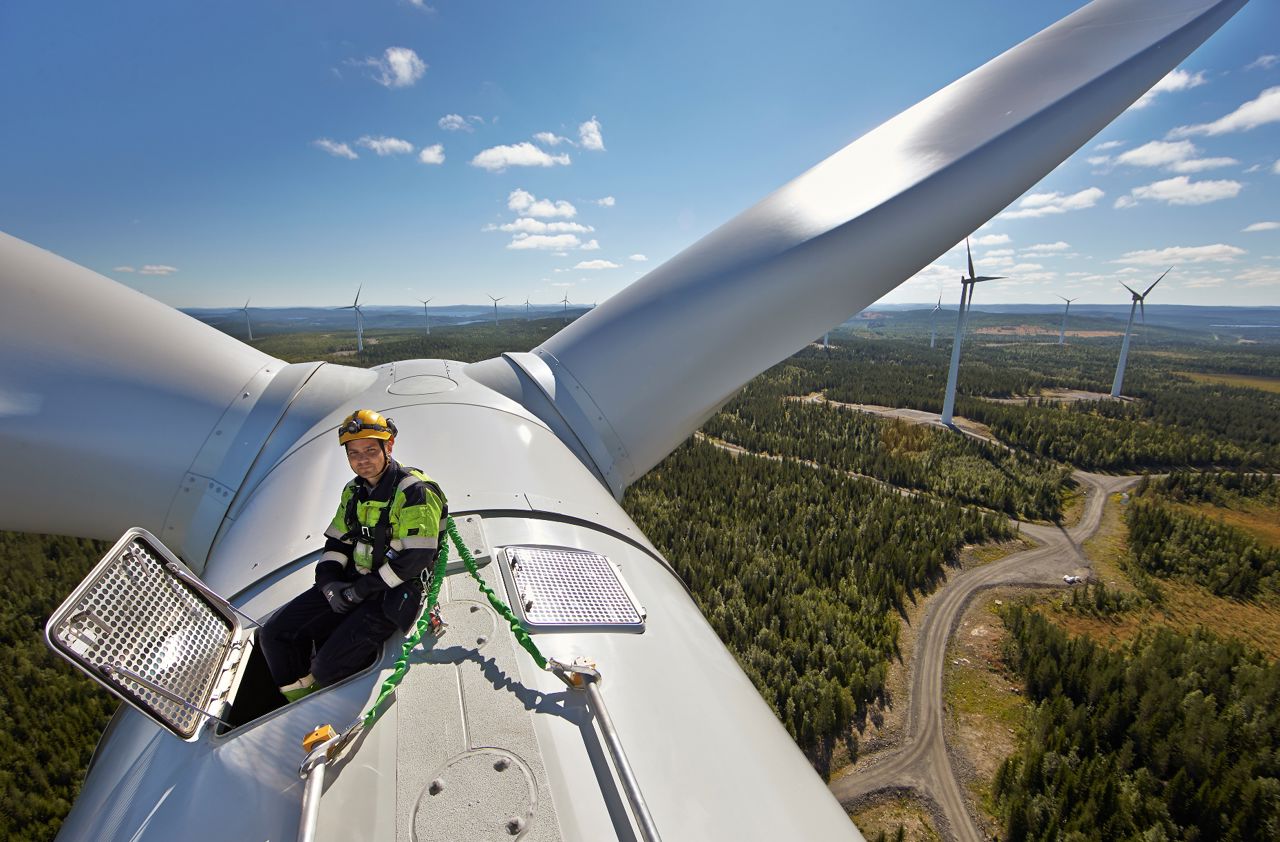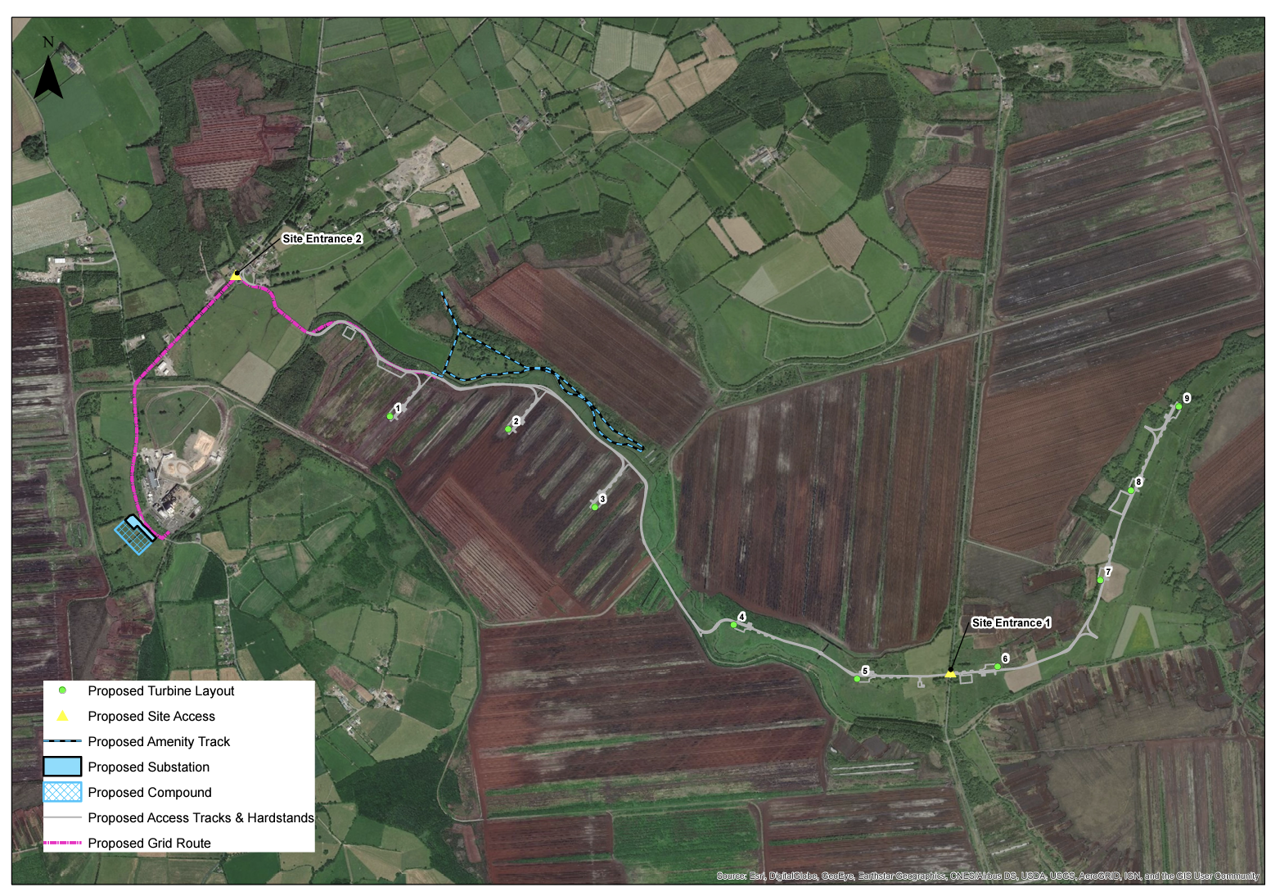
PROJECT BEING CONSTRUCTED
Cushaling Wind Farm is a renewable energy project located in an area with a long history of electricity generation. As a part of decarbonising our energy system and delivering effective climate action, this project forms a natural step in the evolution of locally generated electricity. With this, comes the opportunity to ensure that energy generation can continue to deliver benefits to the local area.
PROJECT AT A GLANCE
-
9 turbines
-
Turbines will be set back circa 1km from houses
-
No Shadow Flicker at any homes in the area
-
Generation of 55MW of renewable energy to the Irish electricity grid system
-
Turbine height is 185m
-
All cables will be underground
-
The wind farm substation is in the area of the Cushaling Power Plant
-
An associated battery storage facility is located within the substation compound
-
Associated works shall include access tracks, turbine foundations and hardstanding areas, drainage works, temporary site compound, underground electrical and communications cables between turbines and an underground cable to connect the proposed project to the local substation
PROJECT PROPOSAL
The Cushaling Wind Farm consists of 9 turbines with a combined output of 55MW of electricity. Associated with this project is a significant community benefit fund which assuming RESS (Renewable Energy Support Scheme) support is a multimillion euro investment opportunity specifically for the local area.
The area in which the wind farm is being constructed centers around the townland of Cushaling and is in the hinterland of the Cushaling Power Station. This area includes the townlands of, Kilcumber, Cloncant & Cushaling in County Offaly and one in the townland of & Ticknevin in Co. Kildare.
The need for this project
The impacts of climate change on our world are indisputable. We are all being challenged to consider the role we play in climate action and how we can reduce our reliance on costly and polluting imported fossil fuels. The world is getting warmer, and extreme weather events are becoming more frequent. We cannot stop climate change, but we can take action to address it. Renewable energy development is a vital part of that action.
The energy price hikes experienced across Europe following Russia's invasion of Ukraine have put huge pressure on households and businesses, and exacerbated the cost-of-living crisis. Our electricity demands are also on the rise and providing sufficient supplies to avoid potential power shortages has become ever more challenging.
Furthermore, Ireland's energy security has come into sharp focus. Having our own secure, sustainable supply will shield us from global market energy price increases and continue to help protect families and businesses from the worst effects of a crisis caused by our reliance on fossil fuels. We can tap into our own natural resources and roll out clean, affordable energy that won’t break the bank.
Electricity generation
Green electricity has brought significant benefits to areas across rural Ireland for many years. How we generate electricity in Ireland is becoming less reliant on fossil fuels, such as peat and coal, and transitioning to renewable forms of energy. This transition is our best way of taking effective action on climate change.
The development of renewable energy projects, such as wind farms, brings significant potential for local economic and societal gains. Areas that develop renewable energy projects will have the potential to benefit from substantial community benefit funds. At Statkraft, we believe that local communities should play a major role in determining how these funds should be used to maximise the benefit for the local area.
The communities in the area of the wind farm project have an opportunity to consider how such a renewable project could make a real difference to their locality. The fundamental principle of our community benefits packages is that we seek to work with local people to deliver increased environmental, economic and social sustainability to their communities.
We are very interested in hearing what ideas you have on how this wind farm could deliver the most benefit to you and your local area.
